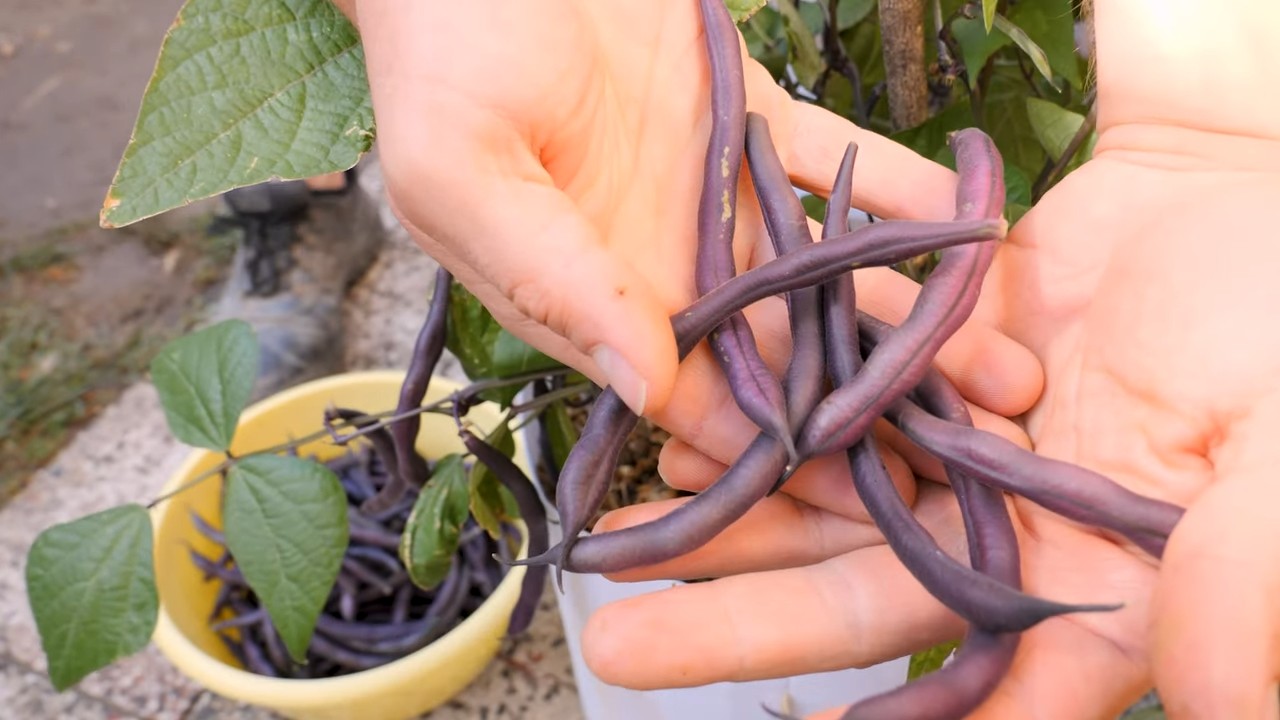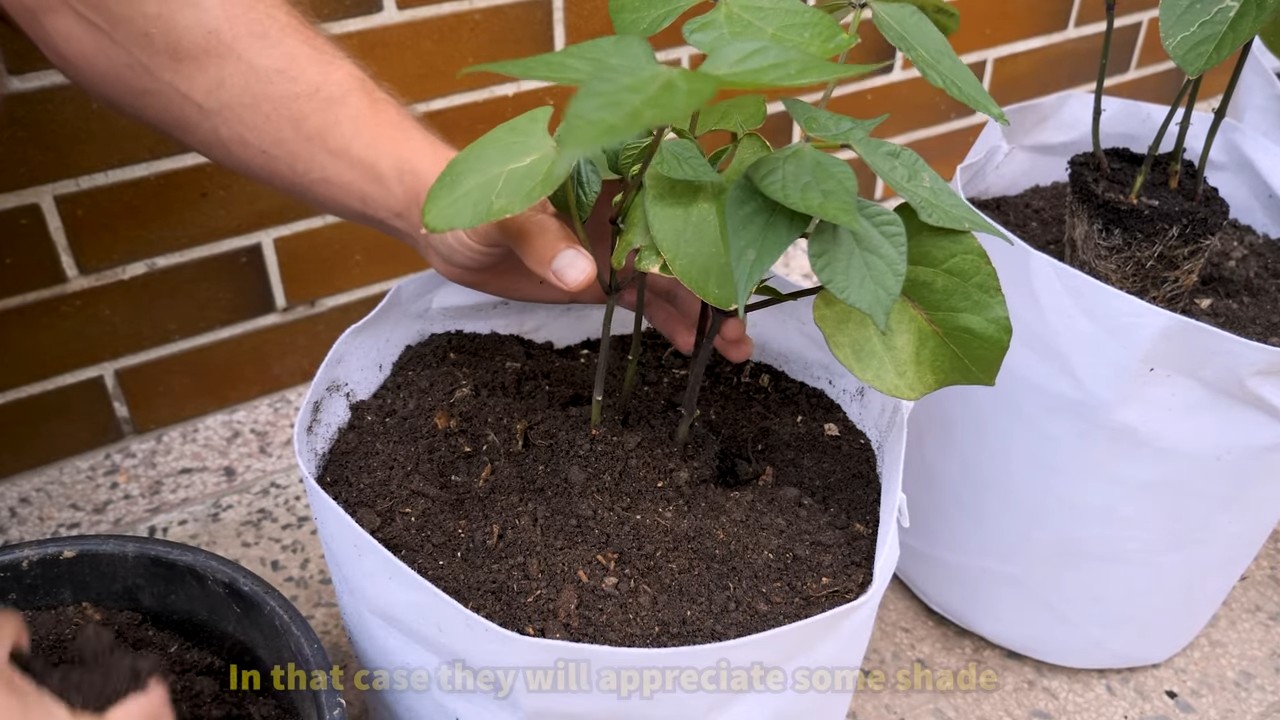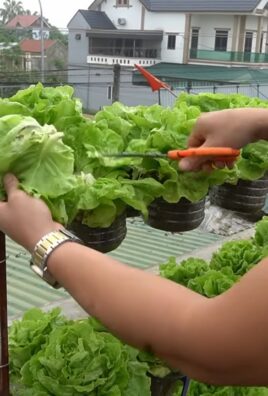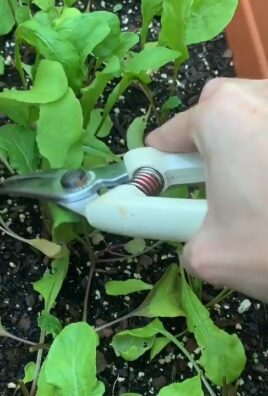Growing Purple Bush Beans can be a rewarding and surprisingly easy addition to your home garden! Have you ever dreamed of plucking vibrant, jewel-toned beans straight from your backyard and adding them to your dinner plate? Well, dream no more! This DIY guide will unlock the secrets to cultivating these beauties, even if you’re a complete beginner.
Beans, in general, have a rich history, dating back thousands of years and playing a vital role in the diets of numerous cultures. From ancient civilizations in the Americas to traditional European cuisines, beans have been a staple food source. While green beans are common, growing purple bush beans adds a touch of whimsy and visual appeal to your garden, making it a conversation starter and a source of pride.
But why should you bother with this particular DIY project? Because it’s more than just aesthetics! Purple bush beans are packed with nutrients, often boasting higher levels of antioxidants than their green counterparts. Plus, they’re incredibly versatile in the kitchen, adding a pop of color to salads, stir-fries, and side dishes. I’m going to show you how to avoid common pitfalls and maximize your yield, ensuring you have a bountiful harvest of these delightful purple gems. Let’s get started!

Growing Purple Bush Beans: A DIY Guide for a Vibrant Garden
Hey there, fellow garden enthusiasts! I’m so excited to share my experience growing purple bush beans. They’re not only delicious but also add a stunning pop of color to your garden. Trust me, watching those vibrant purple pods emerge is incredibly rewarding. This guide will walk you through everything you need to know, from prepping the soil to harvesting your bountiful crop. Let’s get started!
Choosing the Right Variety and Location
Before we dive into the nitty-gritty, let’s talk about variety and location. Choosing the right purple bush bean variety and finding the perfect spot in your garden are crucial for success.
* Variety Selection: There are several fantastic purple bush bean varieties to choose from. My personal favorites are ‘Royal Burgundy’ and ‘Purple Queen’. ‘Royal Burgundy’ is known for its deep purple pods that turn green when cooked, while ‘Purple Queen’ boasts a slightly sweeter flavor. Do some research and see which variety best suits your taste and climate.
* Sunlight: Bush beans need at least 6-8 hours of direct sunlight each day. So, pick a sunny spot in your garden where they can soak up those rays.
* Soil: Well-drained soil is essential. Beans don’t like to sit in soggy soil, which can lead to root rot. Aim for a soil pH between 6.0 and 7.0.
* Space: Bush beans are relatively compact, but they still need some space to grow. Allow about 3-4 inches between plants and 18-24 inches between rows.
Preparing the Soil: The Foundation for Success
Proper soil preparation is the cornerstone of a thriving bean patch. Here’s how I get my soil ready for planting:
* Clearing the Area: Remove any weeds, rocks, or debris from the planting area. Weeds compete with your bean plants for nutrients and water, so it’s important to get rid of them early on.
* Soil Testing: A soil test can tell you the pH level and nutrient content of your soil. You can purchase a soil testing kit at most garden centers or send a sample to your local agricultural extension office.
* Amending the Soil: Based on your soil test results, you may need to amend the soil. If your soil is too acidic (pH below 6.0), add lime to raise the pH. If it’s too alkaline (pH above 7.0), add sulfur to lower the pH.
* Adding Compost: Compost is a gardener’s best friend! It improves soil drainage, adds nutrients, and helps retain moisture. I like to add a generous layer of compost to the planting area and work it into the top 6-8 inches of soil.
* Fertilizing (Optional): While beans are nitrogen-fixing plants (meaning they can convert atmospheric nitrogen into a form they can use), a little boost of phosphorus and potassium can help them get off to a good start. Use a fertilizer that is low in nitrogen (the first number on the fertilizer label) and higher in phosphorus and potassium (the second and third numbers). Follow the instructions on the fertilizer package carefully.
Planting Your Purple Bush Beans: Getting Started
Now for the fun part – planting those seeds!
1. Timing is Key: Plant your purple bush beans after the last frost date in your area. Beans are sensitive to cold temperatures, so it’s best to wait until the soil has warmed up to at least 60°F (15°C). You can find your local frost dates online or by contacting your local agricultural extension office.
2. Direct Sowing: Bush beans are best direct-sown, meaning you plant the seeds directly into the garden soil. They don’t transplant well, so starting them indoors is generally not recommended.
3. Planting Depth: Plant the seeds about 1 inch deep and 3-4 inches apart.
4. Row Spacing: Space the rows 18-24 inches apart.
5. Watering: After planting, water the soil gently but thoroughly. Keep the soil consistently moist until the seeds germinate.
6. Marking the Rows: Use plant markers or labels to identify your bean rows. This will help you keep track of what you’ve planted and prevent you from accidentally weeding out your bean seedlings.
Caring for Your Purple Bush Beans: Nurturing Growth
Once your bean seedlings emerge, it’s important to provide them with the care they need to thrive.
* Watering: Water your bean plants regularly, especially during dry spells. Aim to keep the soil consistently moist but not waterlogged. Water deeply and less frequently, rather than shallowly and more often. This encourages deep root growth.
* Weeding: Keep the area around your bean plants free of weeds. Weeds compete with your beans for nutrients and water. Hand-pull weeds carefully to avoid disturbing the bean plant roots.
* Mulching: Apply a layer of mulch around your bean plants to help retain moisture, suppress weeds, and regulate soil temperature. Organic mulches like straw, hay, or shredded leaves are excellent choices.
* Fertilizing (If Needed): If your bean plants are not growing vigorously, you can give them a light feeding of a balanced fertilizer. Follow the instructions on the fertilizer package carefully. Avoid over-fertilizing, as this can lead to excessive foliage growth at the expense of pod production.
* Pest Control: Keep an eye out for common bean pests like aphids, bean beetles, and spider mites. If you spot any pests, take action promptly to prevent them from damaging your plants. You can use insecticidal soap, neem oil, or other organic pest control methods.
* Disease Prevention: Bean plants can be susceptible to diseases like powdery mildew and bean rust. To prevent these diseases, provide good air circulation around your plants, avoid overhead watering, and remove any infected leaves promptly.
Harvesting Your Purple Bush Beans: The Grand Finale
The moment you’ve been waiting for – harvesting your beautiful purple bush beans!
1. Timing is Everything: Harvest your beans when the pods are firm, plump, and about the size of a pencil. They should snap easily when bent. Overripe beans will be tough and stringy.
2. Gentle Harvesting: Gently snap the bean pods off the plant, being careful not to damage the stems or leaves.
3. Regular Harvesting: Harvest your beans regularly, every few days, to encourage continued production. The more you harvest, the more beans your plants will produce.
4. Enjoying Your Harvest: Purple bush beans are delicious steamed, sautéed, or added to salads. They’re also great for canning or freezing. Remember that ‘Royal Burgundy’ beans will turn green when cooked, while ‘Purple Queen’ retain some of their purple hue.
Troubleshooting Common Problems
Even with the best care, you might encounter some challenges along the way. Here are a few common problems and how to address them:
* Poor Germination: If your bean seeds are not germinating, it could be due to cold soil, poor soil drainage, or old seeds. Make sure the soil is warm enough before planting, improve soil drainage if necessary, and use fresh seeds.
* Yellowing Leaves: Yellowing leaves can be a sign of nutrient deficiency, overwatering, or disease. Check your soil pH and nutrient levels, adjust your watering schedule, and inspect your plants for signs of disease.
* Lack of Pod Production: If your bean plants are growing well but not producing pods, it could be due to insufficient sunlight, poor pollination, or excessive nitrogen fertilization. Make sure your plants are getting enough sunlight, attract pollinators to your garden, and avoid over-fertilizing with nitrogen.
* Pest Infestations: As mentioned earlier, keep an eye out for common bean pests and take action promptly to control them.
Extending the Harvest
Want to enjoy fresh purple bush beans for as long as possible? Here are a few tips for extending the harvest:
* Succession Planting: Plant a new batch of bean seeds every 2-3 weeks to ensure a continuous harvest throughout the growing season.
* Choosing Heat-Tolerant Varieties: If you live in a hot climate, choose heat-tolerant bean varieties that can withstand high temperatures.
* Providing Shade: During the hottest part of the day, provide some shade for your bean plants to prevent them from overheating. You can use shade cloth or plant them near taller plants that will provide some afternoon shade.
Growing purple bush beans is a rewarding experience that adds beauty and flavor to your garden. With a little planning and care, you can enjoy a bountiful harvest of these vibrant and delicious beans. Happy gardening!

Conclusion
So, there you have it! Growing purple bush beans isn’t just about adding a vibrant splash of color to your garden; it’s about unlocking a world of flavor, nutrition, and gardening satisfaction. We’ve explored the simple steps to cultivate these beauties, from selecting the right seeds and preparing the soil to nurturing them through their growth cycle and harvesting their bountiful yield.
Why is this DIY trick a must-try? Because it empowers you to take control of your food source, connect with nature, and enjoy the unparalleled taste of homegrown produce. Store-bought beans simply can’t compare to the crisp, fresh flavor of purple bush beans picked straight from your garden. Plus, the visual appeal of these deep purple pods is undeniable, making them a conversation starter and a delightful addition to any meal.
But the benefits extend beyond aesthetics and taste. Growing your own purple bush beans allows you to avoid harmful pesticides and herbicides, ensuring that you’re feeding yourself and your family the healthiest possible food. You’ll also reduce your carbon footprint by eliminating the transportation costs associated with commercially grown produce.
Looking for variations? Consider companion planting. Marigolds, for example, can help deter bean beetles, while nasturtiums attract aphids away from your beans. You can also experiment with different varieties of purple bush beans, such as ‘Royal Burgundy’ or ‘Purple Queen,’ each offering slightly different characteristics in terms of size, shape, and flavor. Try succession planting, sowing new seeds every few weeks, to enjoy a continuous harvest throughout the growing season. For a fun twist, let some of your beans mature fully and dry on the vine. These dried beans can be stored for later use in soups and stews, providing a hearty and nutritious meal during the colder months. You can even save some seeds from your best plants to ensure a consistent supply of your favorite variety year after year.
Don’t be intimidated if you’re a beginner gardener. Growing purple bush beans is a remarkably forgiving process. With a little bit of planning and attention, you can achieve impressive results, even in a small space. Whether you have a sprawling backyard or a tiny balcony, there’s room for a few purple bush bean plants.
We wholeheartedly encourage you to give this DIY trick a try. Embrace the joy of gardening, the satisfaction of harvesting your own food, and the delicious flavor of homegrown purple bush beans. We’re confident that you’ll be amazed by the results.
And most importantly, we want to hear about your experience! Share your photos, tips, and stories with us in the comments section below. Let us know what worked well for you, what challenges you encountered, and any creative ways you’ve found to incorporate your homegrown purple bush beans into your meals. Your feedback will help other gardeners learn and grow, creating a vibrant community of purple bush bean enthusiasts. So, grab your seeds, get your hands dirty, and embark on this rewarding gardening adventure. Happy growing!
Frequently Asked Questions (FAQ)
What are the best conditions for growing purple bush beans?
Purple bush beans thrive in well-drained soil with a pH between 6.0 and 7.0. They require at least six hours of sunlight per day. Before planting, amend the soil with compost or other organic matter to improve drainage and fertility. Consistent moisture is crucial, especially during flowering and pod development. Avoid overhead watering, as this can promote fungal diseases. Soaker hoses or drip irrigation are ideal for delivering water directly to the roots.
How long does it take for purple bush beans to mature?
Purple bush beans typically mature in 50-60 days from planting. However, this can vary depending on the variety, climate, and growing conditions. Keep an eye on the pods; they are ready to harvest when they are firm, plump, and easily snap off the plant. Regular harvesting encourages continued production.
What are some common pests and diseases that affect purple bush beans?
Common pests include bean beetles, aphids, and spider mites. Bean beetles can be handpicked or treated with insecticidal soap. Aphids can be controlled with a strong spray of water or by introducing beneficial insects like ladybugs. Spider mites thrive in dry conditions, so maintaining adequate moisture can help prevent infestations. Diseases such as powdery mildew and bean rust can occur in humid environments. Ensure good air circulation around the plants and avoid overhead watering to minimize the risk of these diseases. If necessary, use a fungicide labeled for use on beans.
Can I grow purple bush beans in containers?
Yes, purple bush beans are well-suited for container gardening. Choose a container that is at least 12 inches deep and wide to provide adequate space for the roots to grow. Use a high-quality potting mix and ensure that the container has drainage holes. Water regularly and fertilize every few weeks with a balanced fertilizer. Place the container in a sunny location that receives at least six hours of sunlight per day.
How do I save seeds from my purple bush beans?
To save seeds, allow some of your bean pods to mature fully and dry on the vine. Once the pods are completely dry and brittle, harvest them and shell the beans. Spread the beans out on a tray to dry further for a few days. Store the dried beans in an airtight container in a cool, dark, and dry place. Properly stored seeds can remain viable for several years.
Are purple bush beans more nutritious than green beans?
While both purple and green bush beans are nutritious, purple bush beans contain anthocyanins, which are powerful antioxidants that give them their distinctive color. Anthocyanins have been linked to various health benefits, including reducing the risk of heart disease and cancer. Both types of beans are excellent sources of fiber, vitamins, and minerals.
What are some creative ways to use purple bush beans in cooking?
Purple bush beans can be used in a variety of dishes. They can be steamed, sautéed, roasted, or grilled. Add them to salads, stir-fries, soups, and stews. Their vibrant color makes them a visually appealing addition to any meal. Try blanching them briefly to retain their color when cooking. They can also be pickled or fermented for a tangy and flavorful treat.
Why do my purple bush beans turn green when cooked?
The purple color of purple bush beans is due to anthocyanins, which are heat-sensitive pigments. When exposed to heat, these pigments can break down, causing the beans to turn green. To minimize color loss, cook the beans quickly and avoid overcooking. Steaming or stir-frying are good options. Adding a touch of acid, such as lemon juice or vinegar, can also help preserve the color.
How often should I fertilize my purple bush beans?
Purple bush beans are not heavy feeders, but they benefit from regular fertilization. Apply a balanced fertilizer every few weeks, starting when the plants are about 6 inches tall. Avoid over-fertilizing, as this can lead to excessive foliage growth at the expense of pod production. A fertilizer with a lower nitrogen content is ideal, as too much nitrogen can inhibit flowering and pod development.
What if my purple bush beans aren’t producing pods?
Several factors can contribute to poor pod production. Insufficient sunlight, lack of pollination, nutrient deficiencies, and extreme temperatures can all play a role. Ensure that your plants are receiving at least six hours of sunlight per day. If you suspect a lack of pollination, gently shake the plants to help distribute pollen. Fertilize with a balanced fertilizer to address any nutrient deficiencies. Protect the plants from extreme temperatures by providing shade during hot weather and covering them during cold snaps.





Leave a Comment